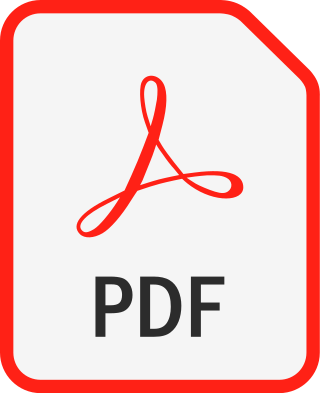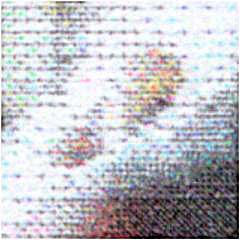A file viewer is a utility application software on operating systems, such as Linux, macOS, or Windows. The file viewer is responsible for user access of files located on a data storage device. File viewers allow the user to open and view content on a device, such as a Personal Computer (PC) or a mobile phone.

Portable Document Format (PDF), standardized as ISO 32000, is a file format developed by Adobe in 1992 to present documents, including text formatting and images, in a manner independent of application software, hardware, and operating systems. Based on the PostScript language, each PDF file encapsulates a complete description of a fixed-layout flat document, including the text, fonts, vector graphics, raster images and other information needed to display it. PDF has its roots in "The Camelot Project" initiated by Adobe co-founder John Warnock in 1991. PDF was standardized as ISO 32000 in 2008. The last edition as ISO 32000-2:2020 was published in December 2020.
In computing, tar is a computer software utility for collecting many files into one archive file, often referred to as a tarball, for distribution or backup purposes. The name is derived from "tape archive", as it was originally developed to write data to sequential I/O devices with no file system of their own, such as devices that use magnetic tape. The archive data sets created by tar contain various file system parameters, such as name, timestamps, ownership, file-access permissions, and directory organization. POSIX abandoned tar in favor of pax, yet tar sees continued widespread use.

Dots per inch is a measure of spatial printing, video or image scanner dot density, in particular the number of individual dots that can be placed in a line within the span of 1 inch (2.54 cm). Similarly, dots per centimetre refers to the number of individual dots that can be placed within a line of 1 centimetre (0.394 in).

An image viewer or image browser is a computer program that can display stored graphical images; it can often handle various graphics file formats. Such software usually renders the image according to properties of the display such as color depth, display resolution, and color profile.
Microsoft WinHelp is a proprietary format for online help files that can be displayed by the Microsoft Help browser winhelp.exe or winhlp32.exe. The file format is based on Rich Text Format (RTF). It remained a popular Help platform from Windows 3.0 through Windows XP. WinHelp was removed in Windows Vista purportedly to discourage software developers from using the obsolete format and encourage use of newer help formats. Support for WinHelp files would eventually be removed entirely in Windows 10.
On Microsoft Windows operating systems, starting with the Internet Explorer 4 Active Desktop Update for Windows 95 to 98, a thumbnail cache is used to store thumbnail images for Windows Explorer's thumbnail view. This speeds up the display of images as these smaller images do not need to be recalculated every time the user views the folder.
As the next version of Windows NT after Windows 2000, as well as the successor to Windows Me, Windows XP introduced many new features but it also removed some others.

The Sony Reader (ソニー・リーダー) was a line of e-book readers manufactured by Sony. The first model was the PRS-500 released in September 2006 and was related to the earlier Sony Librie, the first commercial E Ink e-reader in 2004 using an electronic paper display developed by E Ink Corporation. The last model was the PRS-T3, after which Sony announced it would no longer release a new consumer e-reader.
Compared with previous versions of Microsoft Windows, features new to Windows Vista are numerous, covering most aspects of the operating system, including additional management features, new aspects of security and safety, new I/O technologies, new networking features, and new technical features. Windows Vista also removed some others.

CDisplay is a freeware comic book archive viewer and sequential image viewer utility for Microsoft Windows used to view images one at a time in the style of a comic book. It popularized the comic book archive file format. CDisplay was written to easily view JPEG, PNG and static GIF format images sequentially. The program was designed to be less general purpose than existing image viewer programs, and more convenient for simply viewing images sequentially.

A comic book archive or comic book reader file is a type of archive file for the purpose of sequential viewing of images, commonly for comic books. The idea was made popular by the CDisplay sequential image viewer; since then, many viewers for different platforms have been created.
The following is a comparison of e-book formats used to create and publish e-books.

FastPictureViewer is a freemium image viewer for Windows XP and later. Its aim is to facilitate quick review, rating and annotation of large quantities of digital images in the early steps of the digital workflow, with an emphasis on simplicity and speed. As an app with a freemium license, a basic version is available cost-free for personal, non-profit or educational uses, while a commercial license is required for the professional version with additional features. The basic version starts as a full version trial.

BB FlashBack is a Windows-based screen recording program, distributed by Blueberry Software. It allows the user to add text effects, cut and paste movie footage and edit mouse movements. Recordings are initially saved in a proprietary format which can be opened and edited in the associated editor. Once editing is complete they can be exported to Flash, AVI, and a variety of other formats. A PowerPoint plug-in is also deployed with the program's installer. A freeware version of this program was released in April 2009.

STDU Viewer is computer software, a compact viewer for many computer file formats: Portable Document Format (PDF), World Wide Fund for Nature (WWF), DjVu, comic book archive, FB2, ePUB, XML Paper Specification (XPS), Text Compression for Reader (TCR), Mobipocket (MOBI), AZW, multi-page TIFF, text file (TXT), PalmDoc (PDB), Windows Metafile (EMF), Windows Metafile (WMF), bitmap (BMP), Graphics Interchange Format (GIF), JPEG-JPG, Portable Network Graphics (PNG), Photoshop Document (PSD), PiCture eXchange (PCX-DCX). It works under Microsoft Windows, and is free for non-commercial use.
Bluefire Reader is an e-book reader application for Android, iOS and Windows operating systems that supports white-labelling. It supports the EPUB and PDF formats for digital publications and incorporates facilities for browsing online catalogs, and downloading them directly into the user's personal library. The application features a library that lets users navigate their collection of eBooks, as well as provides a customizable reading experience through configurable font and background color, font size and type, margin size, display brightness, page turn mode, etc. Additionally, the application allows users to import their own books to read them on the go.

Foliate is a free and open-source program for reading e-books in Linux. In English, foliate is an adjective meaning to be shaped like a leaf, from the Latin foliatus, meaning leafy.





